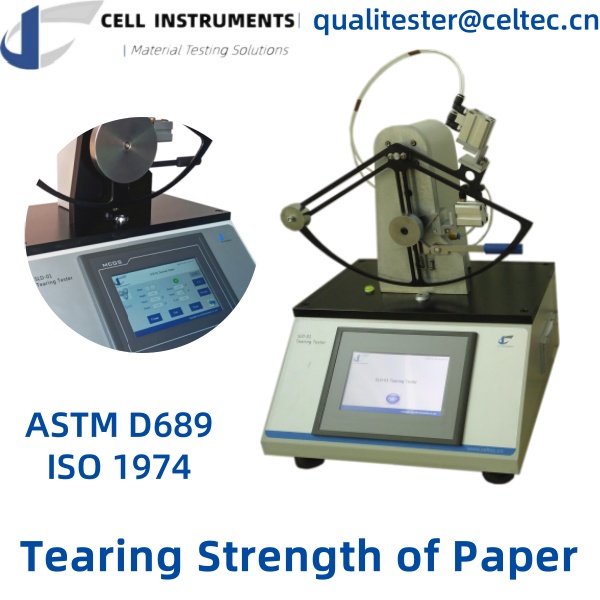Introduction
Tear strength of paper is a critical mechanical property that defines the paper’s ability to resist tearing forces. This property is essential in various industries where the durability and performance of paper under stress are paramount. Understanding and accurately measuring tear strength ensures that the paper can withstand the demands of its intended use, whether in packaging, printing, or other applications.
What is Tear Strength of Paper?
Tear strength, often referred to as tear resistance, is the measure of the force required to propagate a tear that has already been initiated in a material. For paper, this is a vital quality attribute, especially in packaging, where the paper must endure significant stress during handling and transportation.
Standards for Measuring Tear Strength
To ensure consistent and reliable measurements, several international standards guide tear strength testing. Prominent among these are:
- ASTM D1424: Standard Test Method for Tearing Strength of Fabrics by the Falling-Pendulum (Elmendorf-Type) Apparatus. This method is widely used for testing the tear strength of paper.
- ISO 6383: Specifies the method for determining the tear resistance of plastic films and sheeting. Though for plastics, it’s sometimes referenced in paper testing.
- ASTM D1922: This method is designed for measuring the tearing strength of plastic films, but it’s also applicable in certain paper tests.
- ASTM D689: This standard test method measures the internal tear resistance of paper using the Elmendorf tearing tester.
- ISO 1974: Focuses on determining the tear resistance of paper using the Elmendorf apparatus, similar to ASTM D689.
The Role of the Elmendorf Tearing Tester
The Elmendorf tearing tester, named after Armin Elmendorf, is a pivotal tool in measuring the tear strength of paper. This apparatus works by using a pendulum to propagate a tear in a pre-cut sample. The energy expended by the pendulum as it tears through the paper is measured and recorded as the tear strength.
Testing Process
The testing process begins with a paper sample being secured in the tester. A slit is made in the paper, and the pendulum is released. As the pendulum tears through the paper, it loses potential energy. This loss is measured and used to calculate the average tearing force, typically expressed in grams or millinewtons (mN).
Significance of Tear Strength Testing
Accurately measuring tear strength is crucial for industries that rely on paper materials. In packaging, for example, knowing the tear strength can determine if a material is suitable for protecting products during shipping and handling. A higher tear strength indicates a more durable and reliable material.
Recommended Instrument: SLD-01 Tear Tester
For accurate and reliable tear strength testing, the SLD-01 Tear Tester by Cell Instruments is a leading choice. This tester complies with major international standards, including ASTM D1922, ASTM D1424, ASTM D689, ISO 6383, and ISO 1974. It offers a wide test range and features such as pneumatic specimen clamping, automatic pendulum release, and data auto statistics, ensuring consistent and precise measurements.
Conclusion
Understanding and measuring the tear strength of paper is vital for ensuring its durability and performance in various applications. With the right equipment, such as the Elmendorf tearing tester, and adherence to international standards like ASTM D689 and ISO 1974, industries can ensure that their paper products meet the highest quality standards.
FAQ Section
- What is the significance of tear strength in paper?
- Tear strength determines the durability and ability of paper to resist tearing during use, crucial for packaging and other applications.
- How is tear strength measured?
- Tear strength is measured using instruments like the Elmendorf tearing tester, which calculates the force required to propagate a tear in a pre-cut sample.
- Which standards are used for testing tear strength?
- Common standards include ASTM D1424, ASTM D689, ASTM D1922, ISO 6383, and ISO 1974, guiding the testing processes for accurate measurements.
- What industries require tear strength testing?
- Industries such as packaging, printing, textiles, and quality inspection agencies rely on tear strength testing to ensure product durability.
- Why choose the SLD-01 Tear Tester from Cell Instruments?
- The SLD-01 Tear Tester offers precise, reliable measurements and complies with major international standards, making it ideal for accurate tear strength testing.


